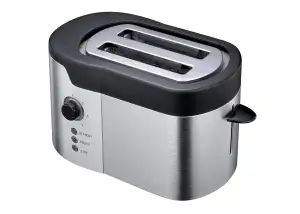Is Microwaving Styrofoam Safe? Unveiling the Truth for a Safer Home

Microwaving food has become a convenient and time-saving method for many households. However, concerns have been raised about the safety of microwaving certain materials, particularly Styrofoam. In this article, we aim to unveil the truth behind microwaving Styrofoam and provide you with the information needed to make informed choices for a safer home. Let's delve into the world of microwaving Styrofoam and separate fact from fiction.
Understanding Styrofoam: What is it made of?
Styrofoam, also known as expanded polystyrene (EPS), is a popular material used for packaging and insulation. It is made from petroleum-based chemicals and consists of 95% air. The remaining 5% is composed of styrene, a liquid hydrocarbon, which is polymerized to form the solid foam structure. This lightweight and versatile material is known for its excellent insulating properties and durability. However, it is important to understand its composition before considering its safety when exposed to heat, such as in a microwave.
The Concerns: Why people question microwaving Styrofoam
Microwaving Styrofoam has been a topic of concern for many individuals. The main reason behind this skepticism is the potential release of harmful chemicals when Styrofoam is heated.
Styrofoam is made from polystyrene, a petroleum-based plastic. It contains a compound called styrene, which has been linked to health issues such as respiratory problems and potential carcinogenic effects.
When exposed to high temperatures, Styrofoam can melt or warp, causing it to release small amounts of styrene into the food or beverage being heated. This has raised concerns about the safety of consuming food that has come into contact with microwaved Styrofoam.
Furthermore, some studies suggest that when certain additives or chemicals present in Styrofoam come into contact with hot substances, they may leach into the food and potentially pose health risks.
These concerns have led many people to question whether microwaving Styrofoam is safe and seek alternative options for heating their food. It is crucial to understand the potential risks associated with microwaving Styrofoam and explore safer alternatives for a healthier home environment.
Microwaving Styrofoam: Is it safe?
The safety of microwaving Styrofoam has been a topic of concern for many. Styrofoam is a type of plastic foam made from polystyrene, a synthetic material commonly used in food packaging. When exposed to high temperatures, such as those found in a microwave, there are concerns that harmful chemicals may leach into the food.
However, the U.S. Food and Drug Administration (FDA) states that when used according to manufacturer guidelines, microwaving Styrofoam is generally safe. The FDA has approved certain types of Styrofoam containers for microwave use, ensuring they meet specific safety standards.
It's important to note that not all types of Styrofoam are microwave-safe. Some containers may release toxic substances when heated, which can be harmful if ingested. Therefore, it is crucial to check the packaging or contact the manufacturer to determine if a particular Styrofoam container is suitable for microwave use.
To further minimize any potential risks, it's advisable to avoid microwaving fatty or oily foods in Styrofoam containers. These types of foods can reach higher temperatures and increase the likelihood of chemical migration.
In conclusion, while microwaving Styrofoam can be safe when using FDA-approved containers and following guidelines, it's essential to exercise caution and make informed choices. If unsure about the safety of a particular container, consider using alternative options for heating food in the microwave to ensure a safer home environment.
Potential Risks: What can happen if you microwave Styrofoam?
Microwaving Styrofoam can pose potential risks to both your health and the environment. When exposed to high temperatures, Styrofoam can release harmful chemicals into your food. One such chemical is styrene, which has been linked to various health issues including respiratory problems and even cancer.
Furthermore, microwaving Styrofoam can cause it to melt or warp, potentially leading to a messy and dangerous situation. The melted Styrofoam can contaminate your food with toxic substances, making it unsafe for consumption.
In addition to the health risks, microwaving Styrofoam also contributes to environmental pollution. Styrofoam is not biodegradable and takes hundreds of years to decompose. When heated in the microwave, it releases greenhouse gases that contribute to climate change.
Given these potential risks, it is best to avoid microwaving Styrofoam altogether. Opting for safer alternatives will ensure that you protect your health and the environment while still enjoying convenient meals.
Alternatives to Microwaving Styrofoam: Safer options for heating food
If you're concerned about the safety of microwaving Styrofoam, there are several alternatives you can consider for heating your food. One option is to use microwave-safe glass or ceramic containers. These materials are non-toxic and do not release harmful chemicals when heated.
Another alternative is to use microwave-safe plastic containers that are labeled as such. Look for containers that are specifically designed for microwave use and have been tested for safety. These containers are made from different types of plastic that do not leach chemicals into your food when heated.
Additionally, you can transfer your food to a microwave-safe plate or bowl before heating it in the microwave. This way, you can avoid any potential risks associated with microwaving Styrofoam.
It's important to note that while these alternatives may be safer options, it's still crucial to follow proper microwave guidelines and instructions provided by the manufacturer. Always ensure that the container or dish you use is labeled as microwave-safe and suitable for the type of food you're heating.
By choosing these alternatives, you can enjoy the convenience of using a microwave without compromising your health and safety.
In conclusion, it is important to make informed choices when it comes to microwaving Styrofoam. While some types of Styrofoam are labeled as microwave-safe, it is still recommended to exercise caution. The potential risks associated with microwaving Styrofoam, such as the release of harmful chemicals, cannot be ignored. It is advisable to explore safer alternatives for heating food, such as using microwave-safe glass or ceramic containers. By prioritizing our health and safety, we can create a safer home environment for ourselves and our loved ones.
Published: 16. 12. 2023
Category: Home



